Easy Steps to Drill Holes in Aluminum like a Pro

Drilling holes in aluminum may seem like a daunting task, but with a few simple steps, you can easily accomplish this task like a professional. Whether you’re working on a DIY project or need to make precise holes for industrial purposes, this guide will walk you through the process.
First and foremost, it’s important to have the right tools for the job. You’ll need a high-quality drill bit specifically designed for drilling through aluminum. The size of the bit will depend on the diameter of the hole you want to create. It’s also recommended to use a drill with adjustable speed settings to ensure control and precision.
Next, mark the spot where you want to drill the hole. Use a punch or center punch to make a small indentation on the surface of the aluminum. This will help keep the drill bit from wandering and provide a starting point for the hole.
Now, secure the aluminum firmly in place. You can use clamps or a vise to hold it securely, making sure it doesn’t move while you’re drilling. This will ensure accuracy and prevent any accidents or injuries.
Pro tip: To prevent the drill bit from overheating and to prolong its lifespan, apply a few drops of cutting oil or lubricant to the area you’ll be drilling. This will reduce friction and make the process smoother.
When you’re ready to start drilling, position the drill bit at a 90-degree angle to the aluminum surface. Apply light pressure and start drilling slowly. As you go deeper into the metal, gradually increase the speed to maintain a steady and smooth motion. Let the drill bit do the work, and avoid forcing it through the aluminum.
Once the hole is complete, remove the drill bit from the aluminum and clean away any aluminum shavings or debris. You can use a brush or compressed air to do this. If needed, you can also deburr the edges of the hole using a file or sandpaper.
By following these easy steps, you can drill holes in aluminum like a professional. Remember to always wear appropriate safety gear, such as safety goggles and gloves, while working with power tools. With practice and the right techniques, you’ll be able to achieve precise and clean holes in aluminum for various projects and applications.
What is Aluminum?
Aluminum is a chemical element with the symbol Al and atomic number 13. It is a silvery-white, soft, non-magnetic and ductile metal in the boron group. By mass, aluminum makes up about 8% of the Earth’s crust; it is the third most abundant element after oxygen and silicon and the most abundant metal in the crust, though it is less common in the mantle below.
Aluminum is remarkable for its low density and ability to resist corrosion through the phenomenon of passivation. Aluminum and its alloys are vital to the aerospace industry and important in transportation and building industries.
Aluminum is also widely used in cooking utensils, electrical cables, and packaging materials. It has a wide range of industrial applications, including in the production of automobiles, airplanes, building materials, and consumer electronics.
Despite its abundance, aluminum was not discovered until the early 19th century. It is extracted from bauxite, a naturally occurring ore containing aluminum hydroxide. The process of extracting aluminum from bauxite involves a series of chemical reactions and electrolysis.
Aluminum has many desirable properties, including its ability to conduct electricity, its strength-to-weight ratio, and its resistance to corrosion. These properties make it an ideal material for a wide range of applications.
Importance of Drilling Holes in Aluminum
Drilling holes in aluminum is an essential process in various industries and applications. Whether you are working with aluminum sheets, plates, or profiles, the ability to drill precise and accurate holes is crucial for the success of your project. Here are some reasons why drilling holes in aluminum is important:
1. Assembly and Fastening:
Drilled holes in aluminum allow for easy assembly and fastening of different components. Whether you need to attach brackets, hinges, or other hardware, drilling holes provides a secure and stable connection. Without properly drilled holes, the components may not fit correctly or may not be securely attached, leading to structural weaknesses.
2. Weight Reduction:
Aluminum is known for its excellent strength-to-weight ratio, making it a popular choice for various applications where weight is a concern. By drilling holes in aluminum, you can reduce its overall weight without compromising its structural integrity. This is particularly beneficial in industries like aerospace and automotive, where every ounce saved can improve performance and fuel efficiency.
3. Cooling and Ventilation:
Drilling holes in aluminum is essential for providing cooling and ventilation in many applications. For instance, in heat exchangers, air coolers, and electronic enclosures, drilled holes allow for the passage of air, promoting heat dissipation and preventing overheating. Proper ventilation is critical to maintaining the longevity and performance of various components.
4. Alignment and Positioning:
Drilled holes act as reference points and aids in aligning and positioning different parts or components during assembly. They ensure accurate alignment and help maintain consistent spacing. This is particularly important when working on projects that involve multiple parts or when creating connections between different elements. Without drilled holes, it can be challenging to achieve precise alignment, leading to potential inaccuracies and issues during the assembly process.
5. Customization and Design Flexibility:
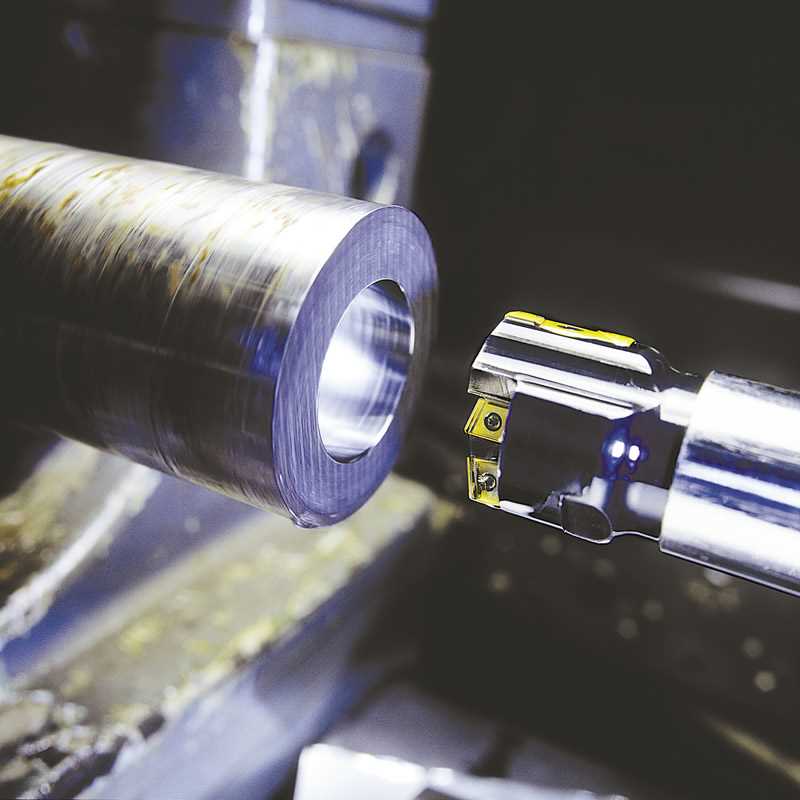
By drilling holes in aluminum, you can customize the material to suit your specific design requirements. Whether you need to create holes for cable routing, mounting points, or decorative purposes, drilling allows you to tailor the aluminum to your desired specifications. This versatility and design flexibility make aluminum a popular choice for various architectural, interior design, and signage applications.

| Benefits | |
|---|---|
| Assembly and Fastening | Allow for easy attachment of components |
| Weight Reduction | Reduces overall weight without compromising strength |
| Cooling and Ventilation | Promotes heat dissipation and prevents overheating |
| Alignment and Positioning | Aids in accurate assembly and spacing |
| Customization and Design Flexibility | Allows for tailored design and specific requirements |
Step 1: Gathering the Necessary Tools
To drill holes in aluminum like a pro, there are a few essential tools you will need. Before you get started, make sure you have the following items:
- Power drill: Choose a drill that is capable of drilling through metal, such as an electric drill or a cordless drill with enough power.
- Drill bits: Select the appropriate drill bits for aluminum drilling. High-speed steel (HSS) or cobalt drill bits are recommended for this task.
- Center punch: This tool will help you mark the spot where you want to drill the hole. It ensures accuracy and prevents the drill bit from slipping.
- Clamps or vice: These are useful for securing the aluminum piece in place while you drill. They provide stability and prevent the material from moving.
- Protective gear: Always wear safety glasses or goggles to protect your eyes from flying debris. Gloves and ear protection might also be necessary depending on the situation.
- Workbench or sturdy surface: Find a suitable work area where you can place your aluminum piece for drilling. It should be a stable surface that can withstand the pressure.
- Lubricant: Using a lubricant like cutting oil or drilling paste can help reduce friction during the drilling process and prolong the lifespan of your drill bits.
Once you have gathered all the necessary tools, you are ready to move on to the next step: preparing the aluminum for drilling.
Choosing the Right Drill Bit
When it comes to drilling holes in aluminum, choosing the right drill bit is essential for achieving clean and accurate results. Here are some important factors to consider when selecting the appropriate drill bit for your aluminum drilling project:
1. Material
Make sure to use a drill bit specifically designed for drilling through aluminum. High-speed steel (HSS) drill bits are a popular choice for aluminum as they are capable of cutting through the metal efficiently.
2. Drill Bit Coating
Consider using a drill bit with a coating designed for aluminum drilling. Titanium- or cobalt-coated drill bits are known for their durability and ability to resist heat buildup, providing a longer lifespan and more efficient drilling performance.

3. Drill Bit Size
Choose a drill bit size that matches the diameter of the hole you want to create. Use a drill bit size chart or a set of drill bits with various sizes to ensure you have the right size for the job.
4. Drill Bit Point Angle
The point angle of the drill bit plays a crucial role in drilling through aluminum. A drill bit with a 118-degree point angle is commonly recommended for aluminum drilling, as it provides a good balance between cutting efficiency and minimizing the risk of the bit wandering off-course.
5. Flute Design
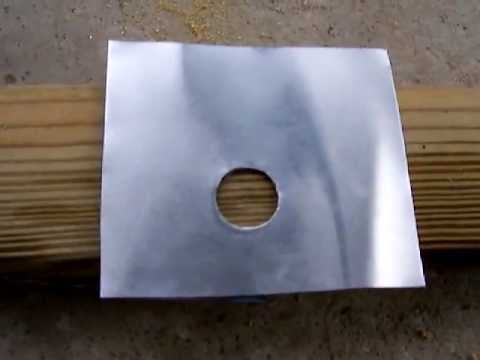
Consider the flute design of the drill bit. Drill bits with a high helix angle or spiral flutes are preferable for aluminum drilling, as they help to clear away chips more effectively and reduce the risk of clogging.
6. Speed and Feed Rate
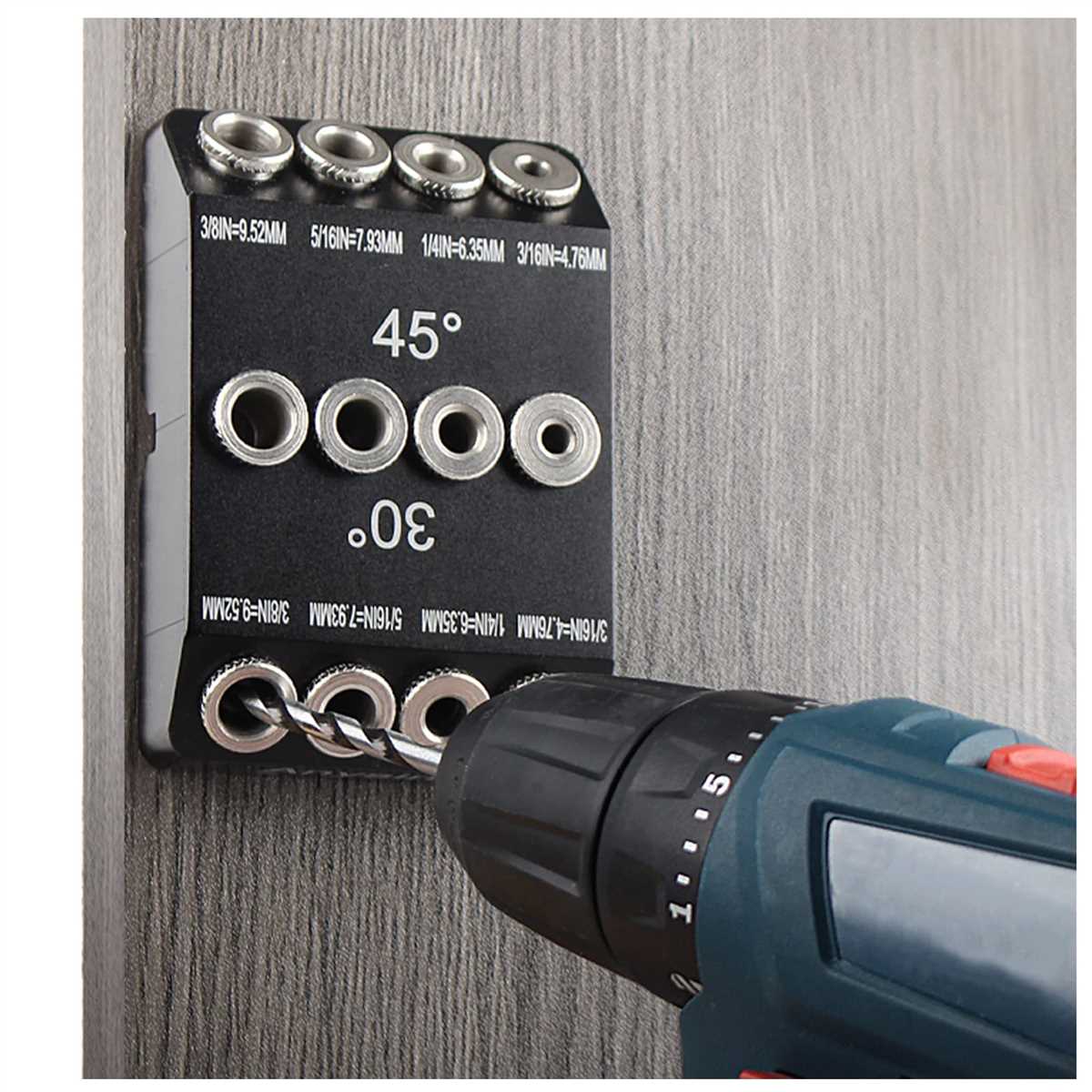
It is important to use the correct speed and feed rate when drilling through aluminum. Consult the manufacturer’s guidelines or refer to a speed and feed chart to ensure you are operating at the optimal settings for the drill bit you are using.
By considering these factors and choosing the right drill bit for your aluminum drilling needs, you can achieve clean and precise holes with ease.
Other Tools You’ll Need
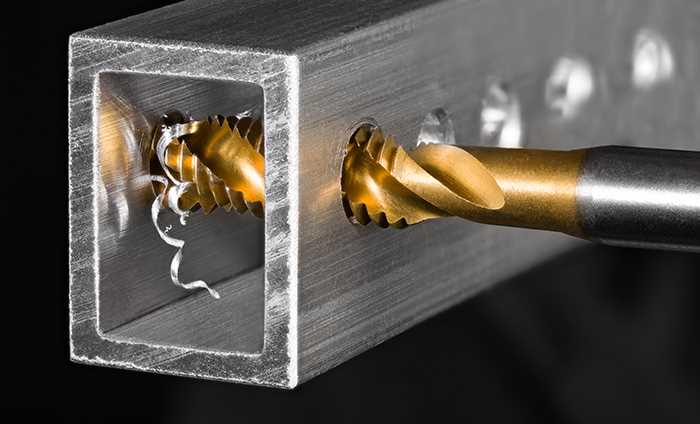
- Drill Bits: In addition to the drill itself, you’ll need a set of drill bits that are suitable for drilling into aluminum. High-speed steel (HSS) drill bits are recommended for aluminum as they are designed to dissipate heat quickly.
- Center Punch: A center punch is used to create a small indentation in the aluminum surface. This helps to guide the drill bit and prevents it from wandering or slipping while drilling.
- Clamps: Clamps are essential for holding the aluminum securely in place while drilling. They help to prevent the material from shifting or moving during the drilling process.
- Lubricant: Using a lubricant like cutting oil or WD-40 can greatly reduce friction and heat buildup during the drilling process. Apply a small amount of lubricant to the drill bit and the hole before drilling.
- Safety Glasses: It is important to wear safety glasses or goggles to protect your eyes from flying debris and metal shavings during the drilling process.
- Protective Gloves: You should also wear protective gloves to protect your hands from sharp edges and metal shavings. Gloves with a good grip can help you maintain control while drilling.
- Deburring Tool: After drilling the holes, you may need to use a deburring tool to remove any rough edges or burrs left behind. This will ensure a clean and smooth hole.
Step 2: Marking the Hole Placement
Once you have gathered all the necessary tools and safety equipment, it’s time to mark the placement of the holes on the aluminum surface. Properly marking the hole placement is crucial for accuracy and precision in drilling.
Here are the steps to mark the hole placement on your aluminum surface:
-
Measure and mark the desired location for the hole using a measuring tape or ruler. Make sure to double-check your measurements before marking.
-
Use a center punch to create a small indentation at the marked spot. This will serve as a guide for the drill bit and help prevent it from slipping.
-
If you are drilling multiple holes, use a straight edge or a ruler to create straight lines connecting the marked spots. This will ensure that the holes are aligned properly.
-
For complex hole patterns or precise measurements, you can create a template or use a pre-made marking tool. This will help you achieve consistent hole placement throughout your project.
Remember to take your time and be precise when marking the hole placement. Any inaccuracies at this stage can affect the final result and may require additional work to correct.
Measuring and Marking
Before drilling holes in aluminum, it is important to accurately measure and mark the location of the holes. This ensures that the holes are in the correct position and match your intended design or function. Follow these steps to measure and mark your aluminum sheet:
- Cut your aluminum sheet to the desired size using a saw or other cutting tool.
- Use a ruler or measuring tape to measure the dimensions of the aluminum sheet and identify where you want to drill the holes.
- Mark the hole locations with a pencil or marker. You can make small dots or use a template to create straight lines.
- If you are drilling multiple holes, ensure they are evenly spaced and aligned properly. You can use a measuring tool to help with this.
- Double-check your measurements and marks to ensure accuracy before proceeding with drilling.
It is important to be precise with your measurements and markings to avoid any mistakes or errors during the drilling process. Taking the time to measure and mark accurately will result in neater, more professional-looking holes in your aluminum sheet.
Using a Center Punch
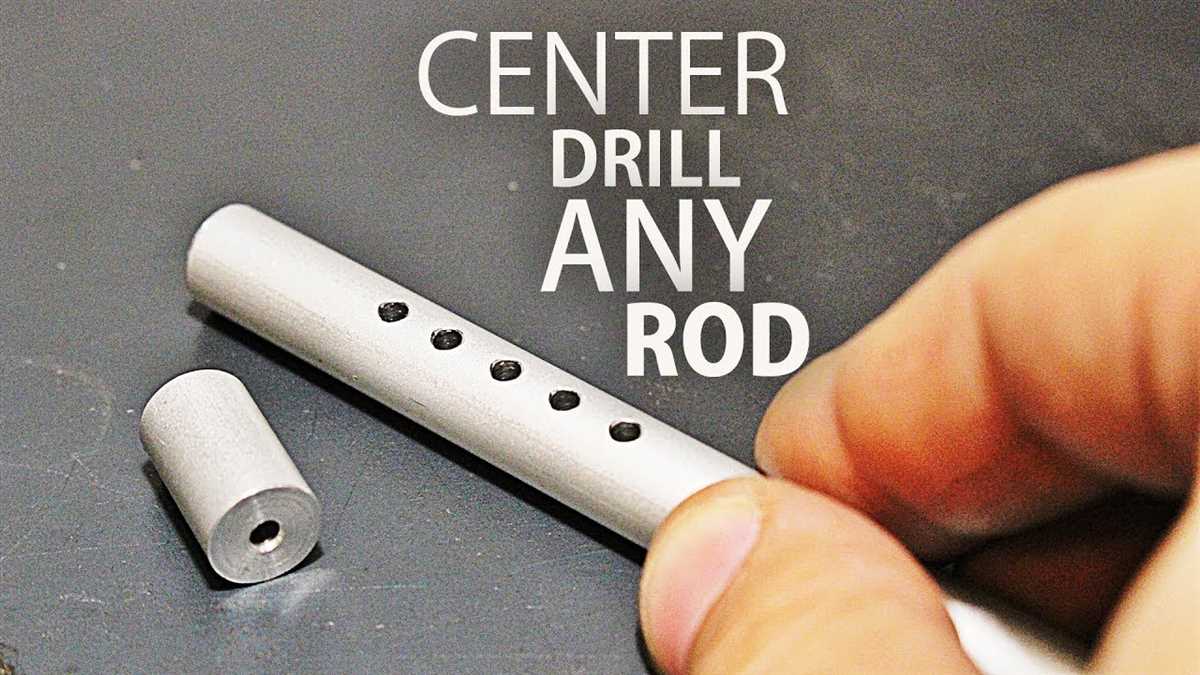
A center punch is a tool that helps create a starting point for drilling holes in aluminum. It is a pointed metal rod with a handle, and it is designed to leave a small indentation on the surface of the material.
Step 1: Mark the hole location
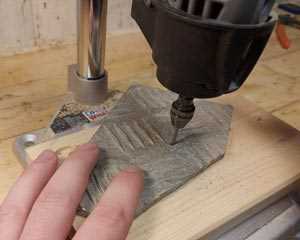
Before using a center punch, you should mark the hole location on the aluminum using a marker or a scribe. This will help you accurately position the center punch.
Step 2: Position the center punch
Place the pointed end of the center punch on the marked spot on the aluminum. Hold the handle firmly with one hand and make sure the punch is perpendicular to the surface of the material.
Step 3: Strike the center punch
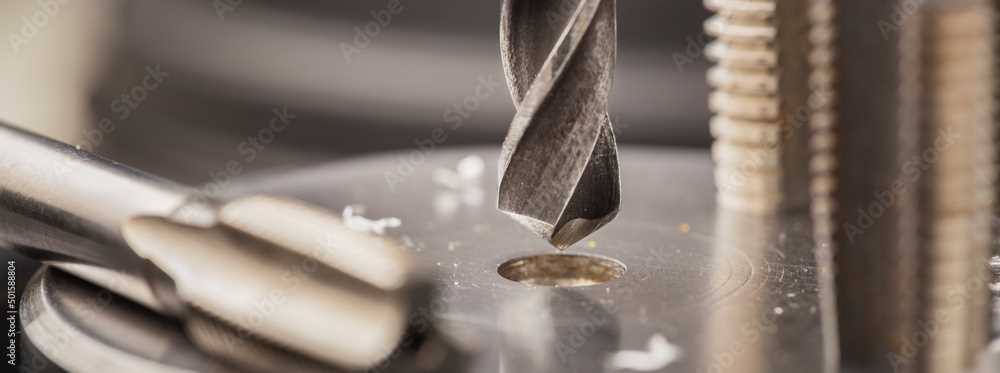
Using a hammer or mallet, strike the top of the center punch with enough force to create a small indentation in the aluminum. This indentation will serve as a guide for the drill bit.
Step 4: Repeat for multiple holes
If you need to drill multiple holes, repeat steps 1 to 3 for each hole location. Make sure to accurately mark and position the center punch before striking it.
Step 5: Drill the holes
After creating the indentations with the center punch, you can proceed to drill the holes using a drill bit suitable for aluminum. Align the drill bit with the center of the indentation and slowly apply pressure to start drilling.
Step 6: Clean the holes
After drilling the holes, use a deburring tool or a metal file to remove any burrs or sharp edges around the holes. This will ensure a clean and smooth finish.
By using a center punch, you can improve the accuracy and starting point for drilling holes in aluminum. It helps prevent the drill bit from slipping and provides better control during the drilling process.
Step 3: Preparing the Aluminum Surface
Before you start drilling holes in the aluminum, it’s important to properly prepare the surface to ensure clean and precise holes. Here are some steps to follow:
- Mark the drilling spots: Use a marker or a punch tool to mark the exact spots where you want to drill the holes on the aluminum surface. This will help you stay on track and avoid any unnecessary mistakes.
- Secure the aluminum: Place the aluminum piece on a sturdy surface or secure it with clamps to prevent it from moving during the drilling process. This will ensure that the holes are drilled in the right place and at the right angle.
- Apply lubricant: Before drilling, apply a lubricant, such as cutting oil or drilling wax, on the surface of the aluminum. This will help reduce friction and heat, making the drilling process smoother and preventing the drill bit from getting stuck in the material.
- Choose the right drill bit: Select a drill bit specifically designed for drilling through aluminum. High-speed steel (HSS) or cobalt drill bits are recommended for this purpose, as they are strong and can withstand the hardness of the material.
- Use a center punch: If you’re drilling larger holes, use a center punch to create a small indentation at the center of the marked spot. This will serve as a guide for the drill bit and help prevent it from wandering or slipping off the surface.
By following these steps, you will ensure that the aluminum surface is properly prepared for drilling, resulting in clean and precise holes.
Cleaning the Surface
Before starting the drilling process, it is important to clean the surface of the aluminum material. Cleaning the surface ensures that the drilling process is smooth and efficient, allowing for better results. Here are a few steps to follow when cleaning the surface:
1. Remove any dirt or debris
- Use a soft brush or cloth to remove any loose dirt or debris from the surface of the aluminum.
- Avoid using abrasive materials or harsh chemicals that could damage the aluminum.
- Ensure that the surface is completely free from any dirt or debris before proceeding.
2. Use a mild cleaning solution
- Prepare a mild cleaning solution by mixing a small amount of dish soap or mild detergent with warm water.
- Dip a soft sponge or cloth into the cleaning solution and gently scrub the surface of the aluminum.
- Pay special attention to any areas that may have stubborn stains or marks.
- Rinse the surface with clean water to remove any residue from the cleaning solution.
3. Dry the surface thoroughly
- After cleaning, use a clean, dry cloth to thoroughly dry the surface of the aluminum.
- Ensure that there is no moisture left on the surface before proceeding with the drilling process.
- Moisture can affect the quality of the drilled holes and may lead to corrosion or other issues.
By following these steps to clean the surface of the aluminum before drilling, you can ensure that the drilling process is successful and the end result is a clean and professional finish.
FAQ:
What tools do I need to drill holes in aluminum?
To drill holes in aluminum, you will need a power drill, drill bits specifically designed for metal, a lubricant, clamps or a vise to secure the aluminum, and safety goggles.
What is the best drill bit for aluminum?
The best drill bits for aluminum are high-speed steel (HSS) or cobalt bits. They have a sharp cutting edge and are durable enough to withstand the high heat generated when drilling into metal.
Do I need to use lubricant when drilling into aluminum?
Yes, it is highly recommended to use a lubricant when drilling into aluminum. The lubricant helps reduce friction and heat, which can cause the aluminum to melt or the drill bit to dull quickly. It also helps to prolong the life of the drill bit.
Can I use regular drill bits to drill holes in aluminum?
While regular drill bits may work for drilling small holes in thin sheets of aluminum, it is best to use drill bits specifically designed for metal when drilling into thicker or harder aluminum. Metal drill bits have a different cutting geometry and are more effective at cutting through metal.
Video:









